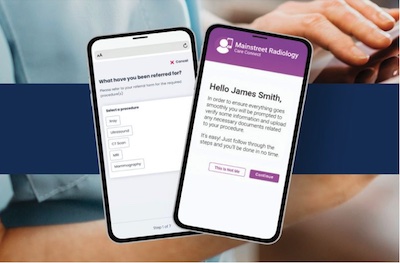Radiology information system vendor Comrad has received its notice of integration with Medicare Web Services, thought to be one of the first major healthcare vendors to achieve the feat.
Comrad has also recently announced the second release of its web-based patient engagement platform Aura Care Connect, featuring a co-branded app for patient pre-registration workflows to be completed and integrated back into the COMRAD RIS workflow.
The Melbourne-headquartered company has also developed an API to Care Connect that it is making available to other vendors with the intention of opening up the healthcare ecosystem, including offering Care Connect’s patient engagement and billing capabilities to non-Comrad users.
